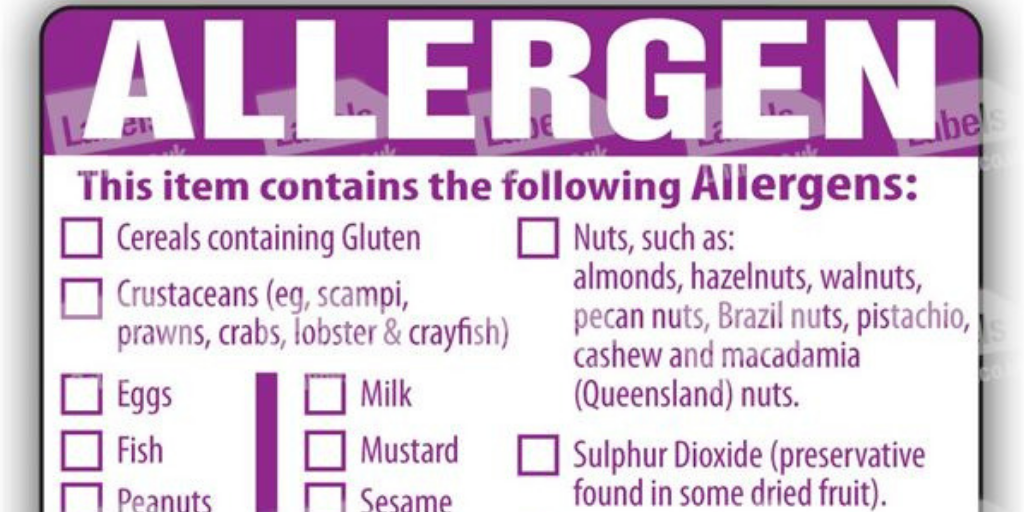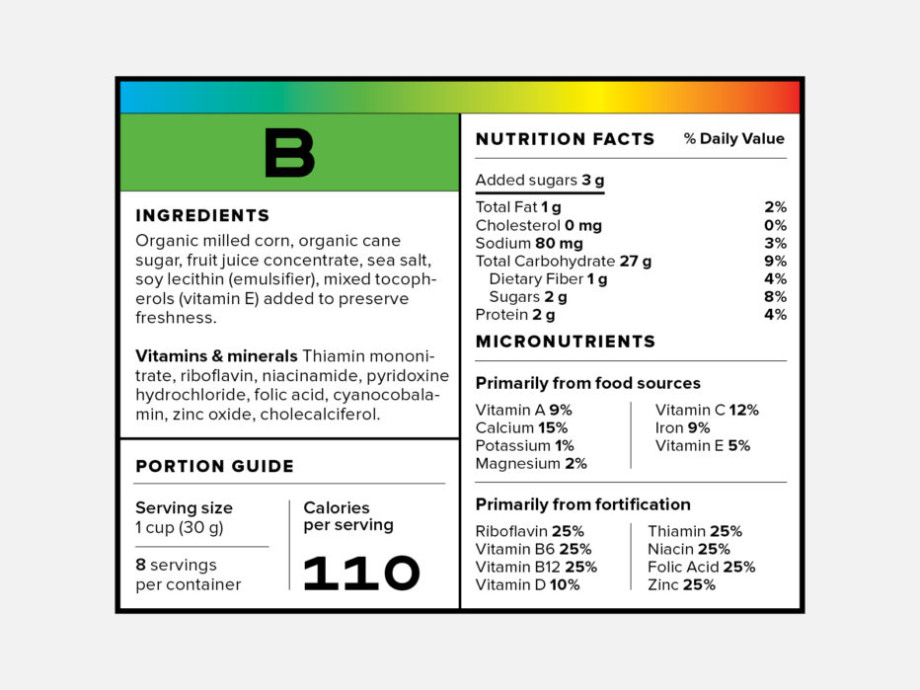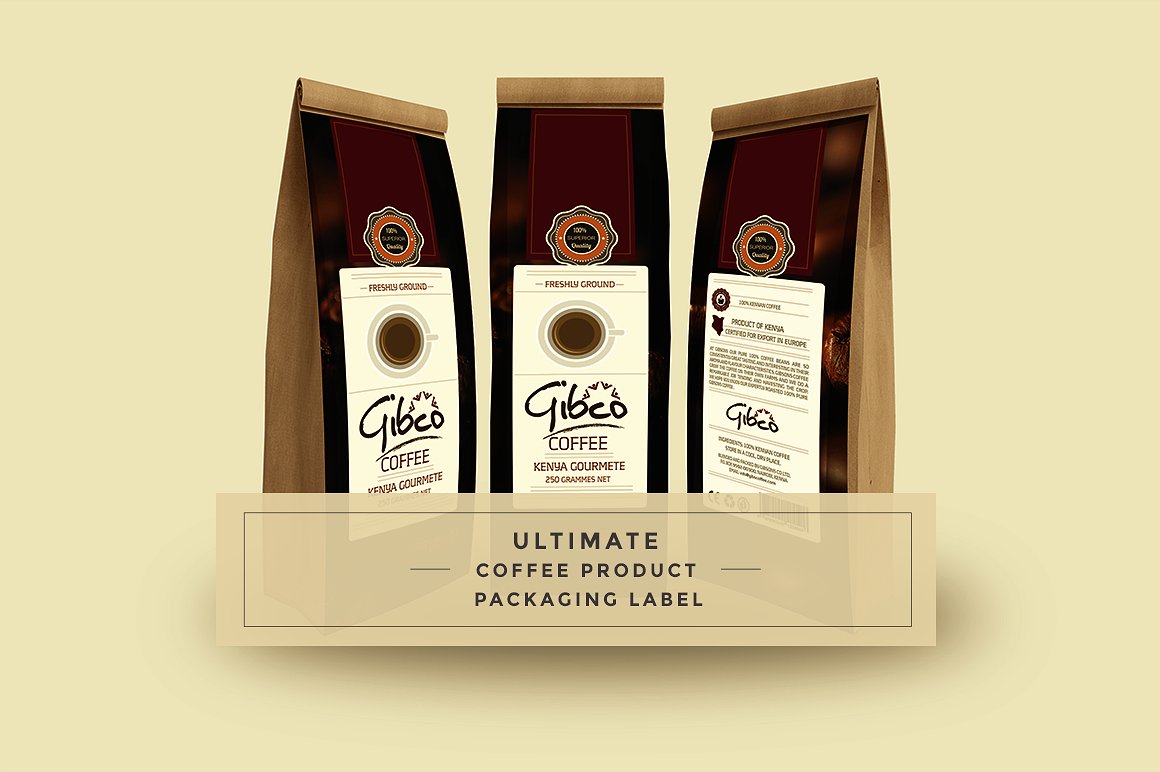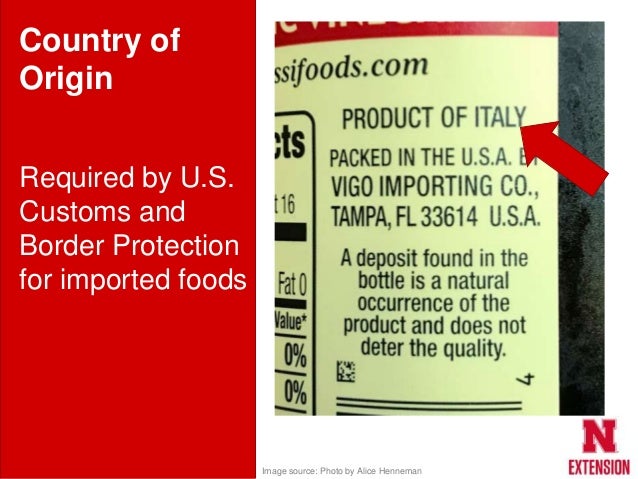42 what should be on food labels
36 Food Labels You Should Know | News - Specialty Food Association Products using the label should explain the use of the term (for example, "no artificial ingredients"). Most foods labeled "natural," "all natural" or "100% natural" are not subject to specific government controls, with the exception of meat and poultry. How To Read Food and Beverage Labels - National Institute on Aging "Sell by" tells how long the manufacturer suggests that a store should sell items such as meat, poultry, eggs, or milk products. Make sure you buy by this date. "Use by" tells how long items will be at peak quality. If you buy or use the product after that date, some might be stale or less tasty.
7 Hidden Messages In Packaged Food Labels - Eat This Not That Be careful of the sugar count. "People should look out for sugar content," says Michalzyck. "I would say check ingredients on packaged goods—you may not expect there to be sugar alcohols, multiple types of sugar, and other ingredients in certain packaged goods but there can be." Make sure to calculate how much sugar you should eat in a day so ...

What should be on food labels
Food labels - Better Health Channel Under labelling laws introduced in Australia in 2003, virtually all manufactured foods must carry an NIP. There are exceptions to the labelling requirements, such as: very small packages and foods like herbs, spices, salt, tea and coffee single ingredient foods (such as fresh fruit and vegetables, water and vinegar) food sold at fundraising events Key Elements of a Food Label To Know | Food Labeling Info Below is a list of information that should be on your product's Principal Display Panel (the area most likely to be seen by consumers) in order to comply with labeling regulations: Food ingredients Minerals Caloric value Typical serving size Reading Food Labels - What You Need to Know - Drugs.com This label tells you what a serving size is and how many servings are in the package. Other information shown includes the amount of calories, fat, carbohydrate, protein, vitamins and minerals found in the food. Begin reading food labels at the top, with the serving size and number of servings in the package.
What should be on food labels. How To Read Food Labels - Fit Me Solution The Daily Value for iron is 18 milligrams, so 1 milligram of iron is enough to take notice of: it is more than 5 percent. But because the current Daily Value for calcium on food labels is 1000 milligrams (and the proposed is 1300), 1 milligram of calcium is a negligible amount. Food Labeling Basics - Food Quality & Safety Weights and volumes must be listed in both English and metric units. The Nutrition Facts panel is familiar to most consumers. Label designers need to know the formatting requirements for the Nutrition Facts panel are rigorous in terms of layout, type style and size, and so on. Food Labels | CDC - Centers for Disease Control and Prevention If you eat the whole thing, you are eating 8 times the amount of calories, carbs, fat, etc., shown on the label. Total Carbohydrate shows you types of carbs in the food, including sugar and fiber. Choose foods with more fiber, vitamins, and minerals. Choose foods with lower calories, saturated fat, sodium, and added sugars. Avoid trans fat. Food label should contain additional information. In order to be able to make profound buying decisions, consumers would need much more information. Food labels alone do not take into account many individual factors and they can only give consumers a rough overview, but will never be sufficient to replace a profound nutrition education. ...
What is Required on a Food Label? | Frontier Label The FDA lists the following requirements that will ensure readability for your consumers: Font that is at least 1/16 of an inch in height based on the lower case letter "o." Usually, this means a minimum of 6 pt font. Font cannot be three times as high as it is wide, or the words will be distorted and unreadable. PDF Food Labeling Guide - Food and Drug Administration 1. I NTRODUCTION 4 2. B ACKGROUND 4 3. G ENERAL F OOD L ABELING R EQUIREMENTS 5 N AME OF F OOD 7 Juices 5. N ET Q UANTITY OF C ONTENTS S TATEMENTS 14 6. I NGREDIENT L ISTS 17 Colors Food Allergen... FDA Food Product Labeling & Packaging Requirements | ESHA Research Mandatory nutrients (total calories, total fat, saturated fat, trans fat, cholesterol, sodium, total carbohydrate, dietary fiber, total sugars, added sugars, protein, vitamin D, calcium, iron, potassium) Placement: In general, place the Nutrition Facts Label on the PDP or the Information Panel, near the ingredient statement. Ingredient Statement Making Sense of Regenerative Labels - FoodPrint This past February, the International Food Information Council released the results of a study on consumer awareness about regenerative agriculture.Of 1,000 people surveyed, only 19 percent said they were familiar with the term, compared with 59 percent who were familiar with "organic."Perhaps unsurprisingly, only 12 percent said they were highly likely to pay more for food raised ...
5 Basic Elements that MUST be on Your Food Label Your net quantity statement needs to be on the front bottom 30% of your food label. It should also be on the outer package or box. #3: Manufacturer Information Include the name and address of the manufacturer, packer, or distributer. Nutrition Labels 101: What's Required? What's Optional? The updated nutrition facts label requirements must be implemented by January 1, 2020, (or January 1, 2021, for companies that have less than $10 million in annual sales). There will be some leniency early on, as products packaged on or before December 31, 2019, will be allowed to keep the current Nutrition Facts label until the product is out ... Food Labeling & Nutrition | FDA Food labeling is required for most prepared foods, such as breads, cereals, canned and frozen foods, snacks, desserts, drinks, etc. Nutrition labeling for raw produce (fruits and vegetables) and... What Information Must Your Food Label Contain - Jet-Label The label must contain the common name of the product. Apart from the usual branding printed on the label, its common or generally known names must be mentioned. For example, 'milk chocolate' or 'orange juice from concentrate'. The Food and Drug Regulation has a list of common names that you should take a look at.
Food labelling - Food and nutrition | NHS inform Nutrition labels must display the amount of energy (calories and kilojoules) and the amount of fat, saturated fat, carbohydrates, sugars, proteins and salt (all expressed in grams) present in 100g (or 100 ml) of the food.
USDA ERS - Food Labeling Food labeling is an area where the Federal Government uses regulatory mechanisms to give consumers more-informed choices where suppliers have no financial incentive to provide full and accurate information about their products.
Reading food labels: Tips if you have diabetes - Mayo Clinic Look for foods with fats, cholesterol and sodium on the low end of the Daily Value; keep fiber, vitamins and minerals on the high end. If your doctor or registered dietitian recommends more or less than 2,000 calories a day, you may need to adjust the percentage accordingly — or simply use the percentage as a general frame of reference.
What Should Be On A Food Label? | KCET Now, flip that package around and locate the "Nutritional Facts" label. You know, the one where you'll find all sorts of information regarding the product's serving size, calorie count, the amount of fat -- saturated, trans or otherwise -- and the percentage of certain vitamins the folks at the FDA recommend taking on a daily basis.
Food labels - NHS Some front-of-pack nutrition labels use red, amber and green colour coding. Colour-coded nutritional information tells you at a glance if the food has high, medium or low amounts of fat, saturated fat, sugars and salt: red means high amber means medium green means low In short, the more green on the label, the healthier the choice.
16 Ways to Improve Nutrition Labels | Fooducate Currently there is no FDA defined level of maximum daily consumption for calculation and display on the nutrition label. Dietitians recommend at most 125 grams of total sugar per day as the upper limit. That works out to 8 tablespoons per day. It would be nice to know that Golden Grahams takes care of the first one.
What to Look for When Reading Food Labels | Quaker Oats Many people, however, don't know how to properly interpret the information contained in food labeling. Many food labels are also misleading or confusing, trying to hide less healthy ingredients and additives, for example. Note: To read the information about each section of the food label, place your mouse over the section you wish to read about.
Understanding Food Labels | The Nutrition Source | Harvard T.H. Chan ... Under the Food Allergen Labeling and Consumer Protection Act of 2004, eight major food allergens—milk, fish, tree nuts, peanuts, shellfish, wheat, eggs, and soybeans—are required to be listed in a "contains" statement near the Ingredients list if present in a food. An example would be "contains wheat, milk, and soy."
Food Labels | Nutrition.gov The U.S. Food and Drug Administration (FDA) has updated the Nutrition Facts label on packaged foods and beverages with a fresh design that will make it easier for you to make informed food choices that contribute to lifelong healthy eating habits. What's in a Name? What Every Consumer Should Know About Foods and Flavors
Reading Food Labels - What You Need to Know - Drugs.com This label tells you what a serving size is and how many servings are in the package. Other information shown includes the amount of calories, fat, carbohydrate, protein, vitamins and minerals found in the food. Begin reading food labels at the top, with the serving size and number of servings in the package.
Key Elements of a Food Label To Know | Food Labeling Info Below is a list of information that should be on your product's Principal Display Panel (the area most likely to be seen by consumers) in order to comply with labeling regulations: Food ingredients Minerals Caloric value Typical serving size
Food labels - Better Health Channel Under labelling laws introduced in Australia in 2003, virtually all manufactured foods must carry an NIP. There are exceptions to the labelling requirements, such as: very small packages and foods like herbs, spices, salt, tea and coffee single ingredient foods (such as fresh fruit and vegetables, water and vinegar) food sold at fundraising events














Post a Comment for "42 what should be on food labels"